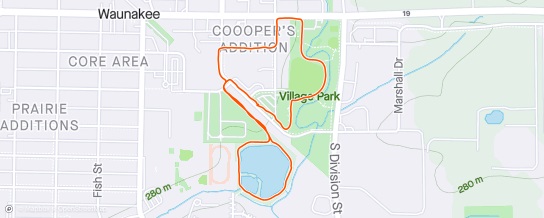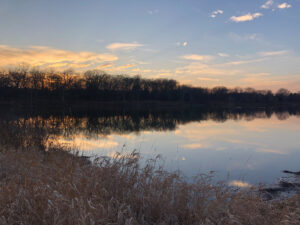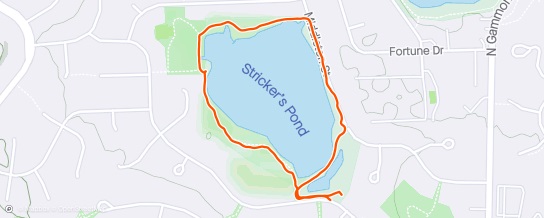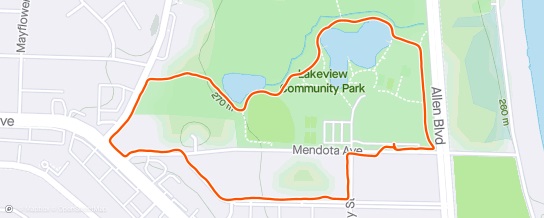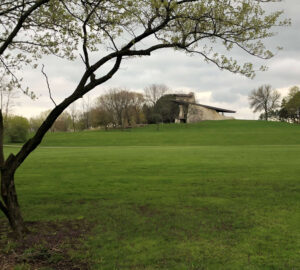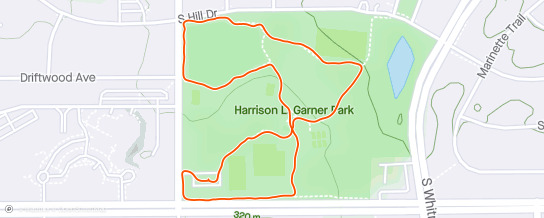Village Park is located (officially) at 410 East Main Street in Waunakee. It is sort of bounded by Main Street, Madison Street, Division Street and the Village Center building. Six Mile Creek loops through the park and there are several bridges that cross over it. There is a baseball field, some basketball courts, several playgrounds, a gazebo and a shelter. It’s a really nice park, with paved paths.
On the other side of Madison Street from the Village Center (and on the other side of the railroad tracks) is the Village Center Pond. This was created by the Rotary Club and it has a nice unpaved path all the way around the pond. There is only one access road to the pond that runs along the cemetery next to St. John the Baptist church and school, however I believe that there is at least one path that leads to the neighborhood south of the pond.
I’ve been coming to Village Park for many years because this is where the Waunafest 5 K and 10 mile races are held in July.
Here is one of my usual walks around the pond and through the park:
I usually park near the Village Center along Madison Street or in the Village Center lot. I then walk up Madison Street and turn onto 3rd Street to reach the pond access road. I usually walk around the pond clockwise. Not sure why I always seem to go clockwise, but there it is. The pond is really nice, except in August when the algae turn it bright green. Once I’ve done the loop around the pond I head back toward Madison Street and head towards Main Street. I often take one of the cross streets over to Bacon Street and then follow Bacon to Main Street. Then I walk down Main to the park and I usually turn in by the shelter and follow the drive through the park to the Village Center. And from there I head to Madison Street and back to the car. This particular route was about 1.5 miles, but it’s easy to make it longer or shorter.
- Waunakee Parks on the Chamber of Commerce web site
- Village Park (Village of Waunakee web site)
- Waunafest – note that Waunafest is held in Centennial Park, but the runs and some of the events are held in Village Park.
- Waunafest Run web site
- My results from running in the Waunafest races over the years

